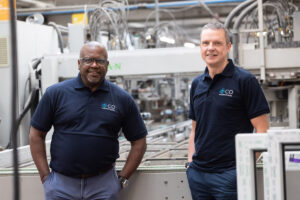Self-checkout showdown as ‘citizen researcher’ finds the fast lane is sometimes the slow lane

It started with a frozen screen and a frustrated shopper. For one tech entrepreneur, that moment turned into a full-blown experiment in speed.
Tired of sluggish self-checkout screens on his home town’s high street and in the city’s supermarkets, Matt Zeunert, founder, DebugBear, decided to take matters into his own hands.
The web performance specialist visited eight central Lancaster stores, recording slow-motion videos on his phone as he scanned and paid for his shopping. Back home, he reviewed the footage frame by frame, measuring in milliseconds how long each self-checkout screen took to respond when he pressed different buttons.
Matt’s testing revealed some mixed results. Aldi on Morecambe Road came out on top, with every interaction taking under 270 milliseconds. Other retailers, including M&S, Sainsbury’s and Asda, were notably slower. One checkout paused for a hand-wringing three seconds at the point of payment.
“A second or two’s delay might not seem like much,” said Matt, “but it all adds up when you’re checking out a basketful of items and the screen appears to momentarily go to sleep after every single touch.”
Among the worst offenders in Matt’s unofficial “speed test” was Boots in St Nicholas Arcades, where the machine froze for more than three seconds after he tapped ‘I don’t have an Advantage Card.’
At TGJones (formerly WHSmith) in Marketgate Shopping Centre, he hit a 1.5-second delay after declining a Premier League promotion. And at Asda’s superstore, the self-checkout stalled for over a second every time he selected a quantity or opted out of carrier bags.
But it wasn’t all bad news, and Matt shared with readers of his company’s blog his overall favourite moment, saying: “Adding an apple turnover to the basket at Lidl takes just 150 milliseconds! Here’s a slow motion video so you can truly enjoy the experience.”
Matt’s findings highlight how self-checkouts, designed to make shopping faster, can sometimes have the opposite effect when screens lag.
“When a screen’s slow to respond, customers often assume it’s frozen and start pressing repeatedly in frustration,” Matt said. “It can make people lose confidence in the self-checkout process altogether.”
What began as a weekend experiment ended up uncovering major differences in checkout responsiveness across retailers.
“There are large differences in how quickly self checkout machines respond,” said Matt. “Those at the bottom of the league table are definitely in need of some improvement.”
Read Matt’s full report on the DebugBear blog


